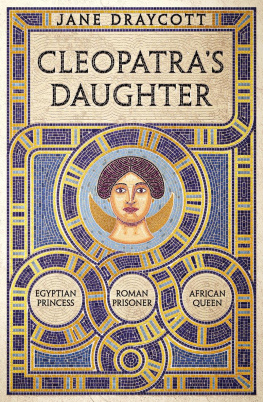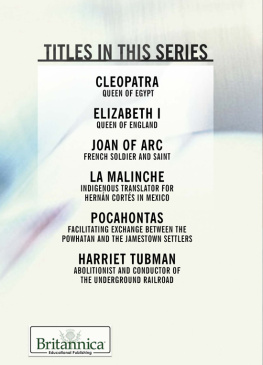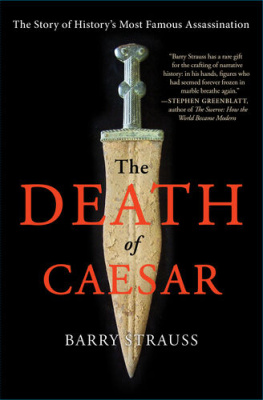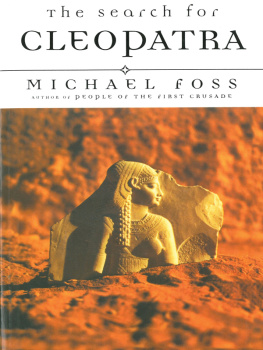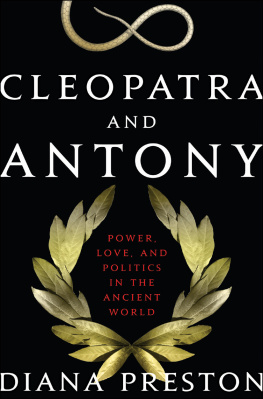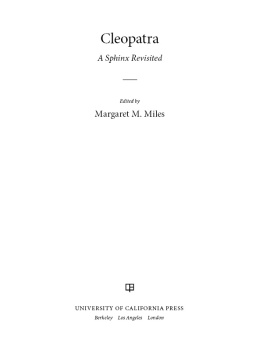Jane Draycott - Cleopatras Daughter: Egyptian Princess, Roman Prisoner, African Queen
Here you can read online Jane Draycott - Cleopatras Daughter: Egyptian Princess, Roman Prisoner, African Queen full text of the book (entire story) in english for free. Download pdf and epub, get meaning, cover and reviews about this ebook. City: New York, year: 2022, publisher: Apollo, genre: History. Description of the work, (preface) as well as reviews are available. Best literature library LitArk.com created for fans of good reading and offers a wide selection of genres:
Romance novel
Science fiction
Adventure
Detective
Science
History
Home and family
Prose
Art
Politics
Computer
Non-fiction
Religion
Business
Children
Humor
Choose a favorite category and find really read worthwhile books. Enjoy immersion in the world of imagination, feel the emotions of the characters or learn something new for yourself, make an fascinating discovery.
- Book:Cleopatras Daughter: Egyptian Princess, Roman Prisoner, African Queen
- Author:
- Publisher:Apollo
- Genre:
- Year:2022
- City:New York
- Rating:4 / 5
- Favourites:Add to favourites
- Your mark:
Cleopatras Daughter: Egyptian Princess, Roman Prisoner, African Queen: summary, description and annotation
We offer to read an annotation, description, summary or preface (depends on what the author of the book "Cleopatras Daughter: Egyptian Princess, Roman Prisoner, African Queen" wrote himself). If you haven't found the necessary information about the book — write in the comments, we will try to find it.
The first biography of one of the most fascinating, and unjustly neglected, female rulers of the ancient world: Cleopatra Selene. Princess, prisoner, African queen and surviving daughter of Cleopatra VII.
In 1895, archaeologists excavating a villa at Boscoreale, outside Pompeii, uncovered a spectacular hoard of high-quality Roman silverware. In the centre of one especially fine gilded dish was a bust of a female figure with thick curly hair, deep-set eyes, a slightly hooked nose and a strong jaw, sporting an elephants scalp headdress. Modern scholars believe it likely that she represents Cleopatra Selene, one of three children born to Cleopatra VII of Egypt and the Roman triumvir Mark Antony.
Using the Boscoreale discovery as her starting-point, Jane Draycott recreates the life and times of a remarkable woman the sole member of the Ptolemaic dynasty to survive following her parents defeat at the Battle of Actium. Unlike her siblings, who were either executed as threat to Romes new ruler, Augustus, or simply forgotten, Cleopatra Selene not only survived but prospered. Brought up in the household of Octavia the Younger, Augustus sister, she married a north African prince, Juba II of Numidia, and became co-ruler with him of the Roman client kingdom of Mauretania.
Cleopatra Selene was a princess who became a prisoner; a prisoner who became a queen; an Egyptian who became Roman; and a woman who became a powerful ruler in her own right at a time when most women were marginalised. Her life shines new and revelatory light on Roman politics, society and culture in the early years of the Empire, on Roman perceptions of Egypt, and on the relationship between Rome and one of its most significant allied kingdoms.
Jane Draycott: author's other books
Who wrote Cleopatras Daughter: Egyptian Princess, Roman Prisoner, African Queen? Find out the surname, the name of the author of the book and a list of all author's works by series.

